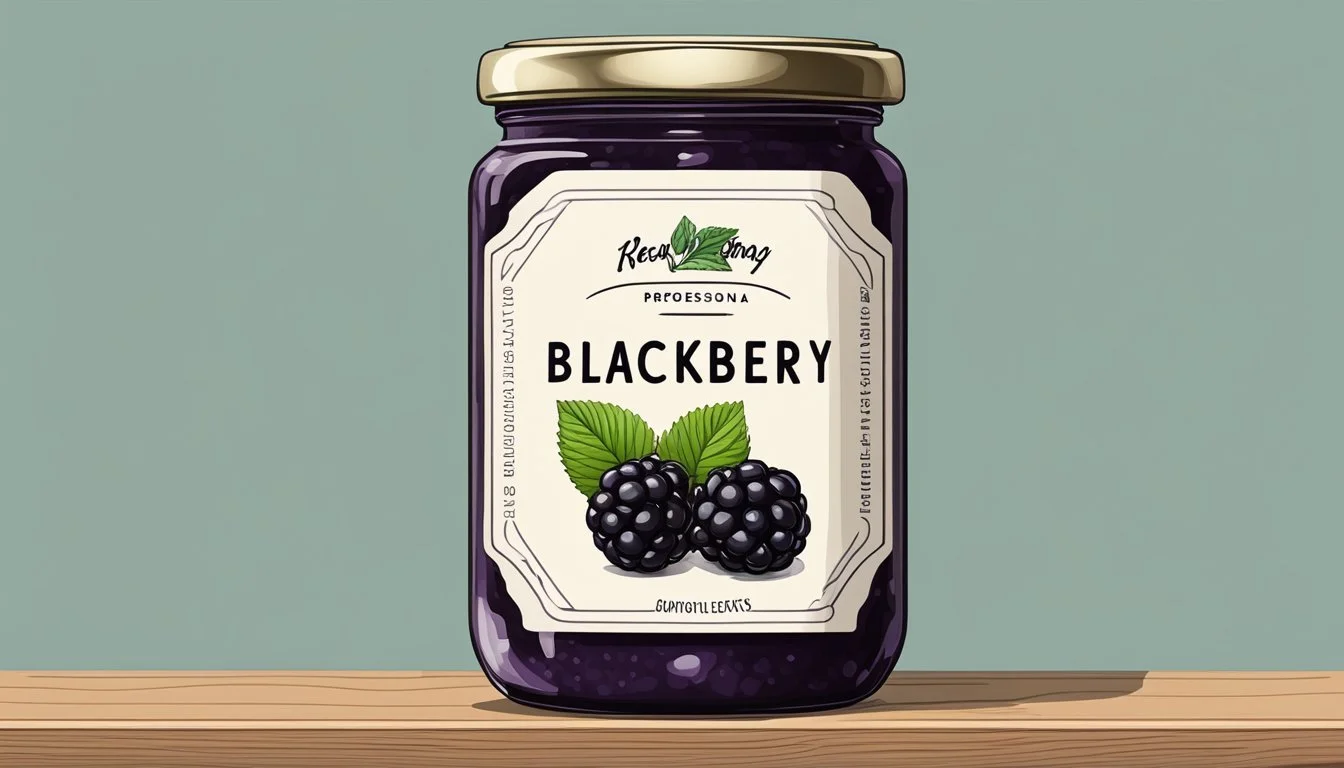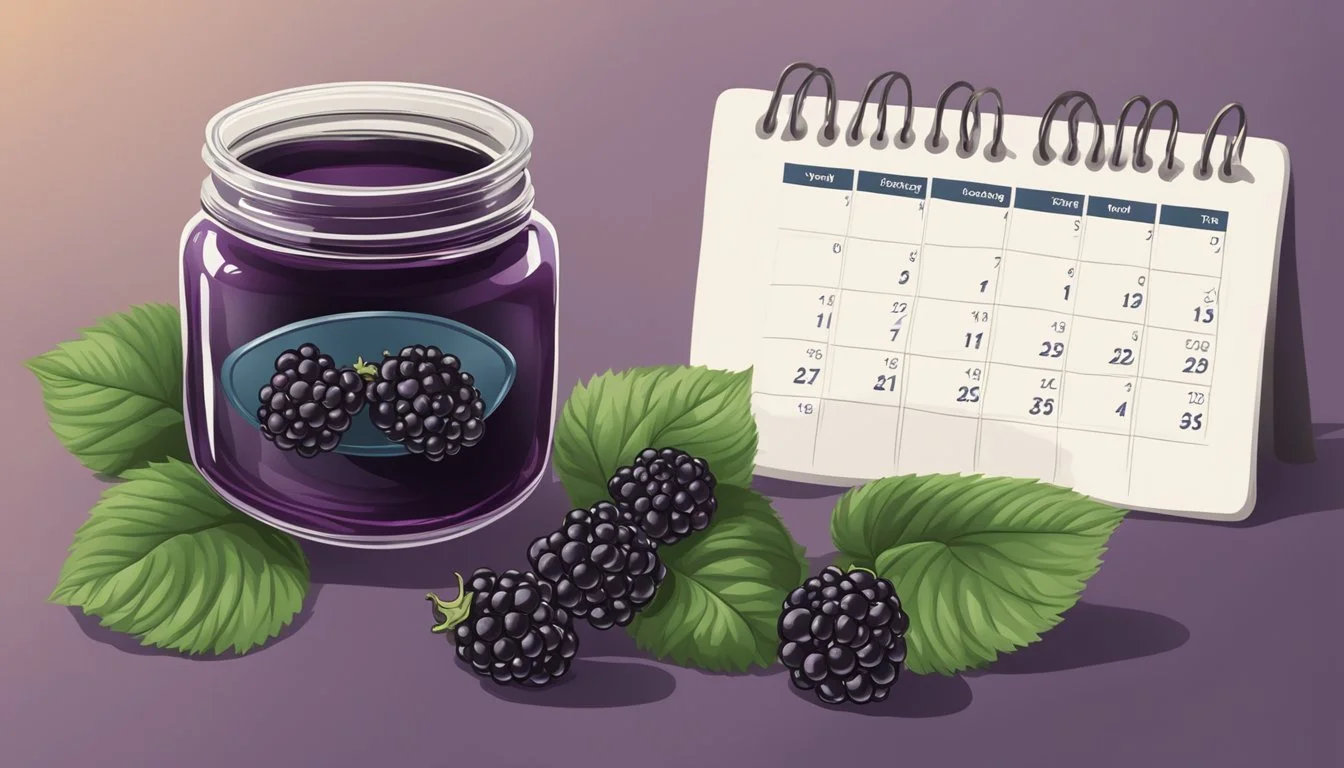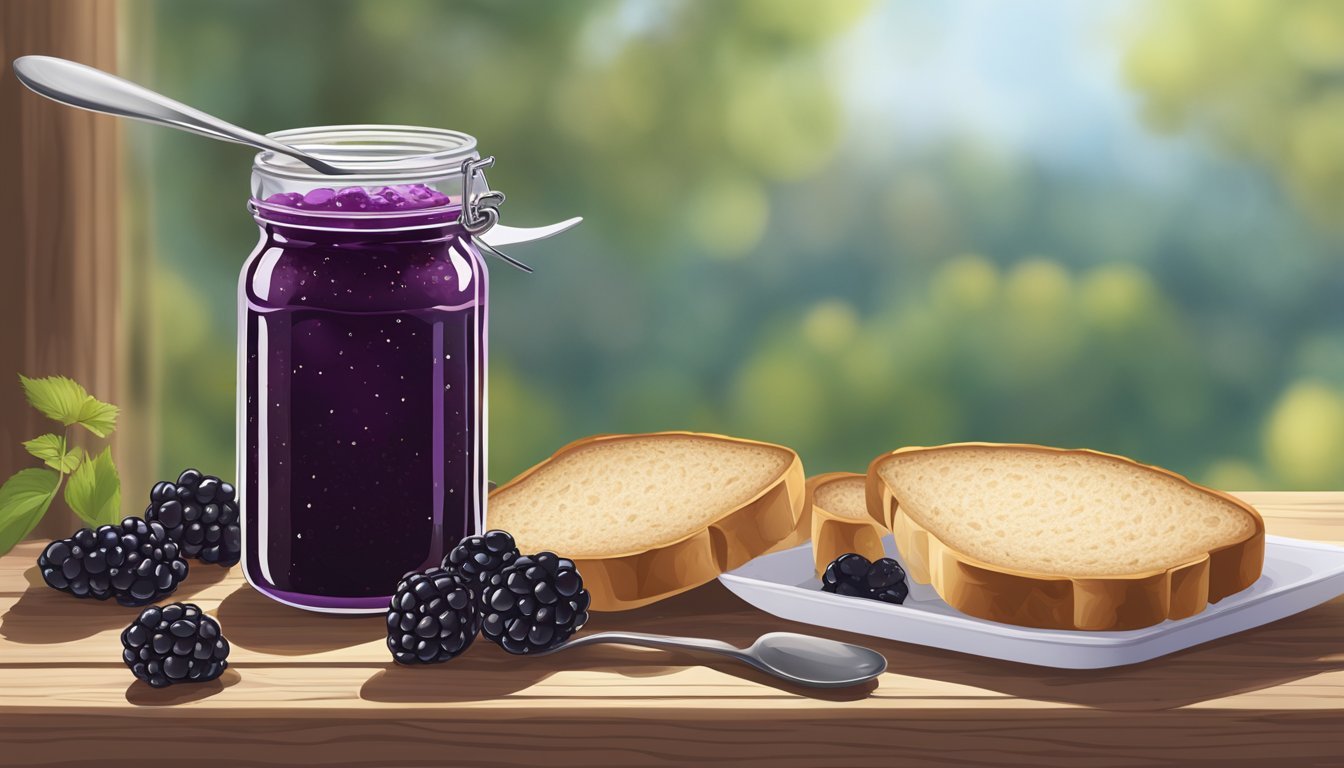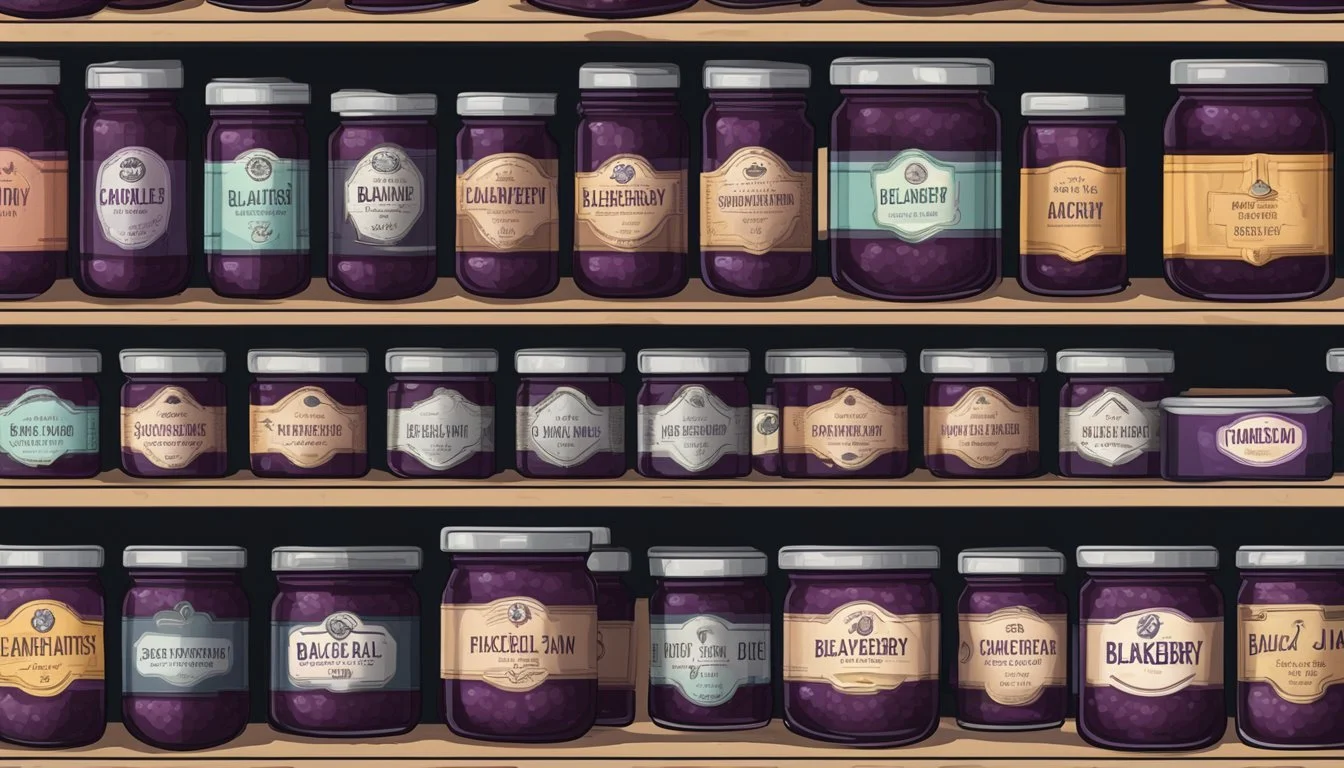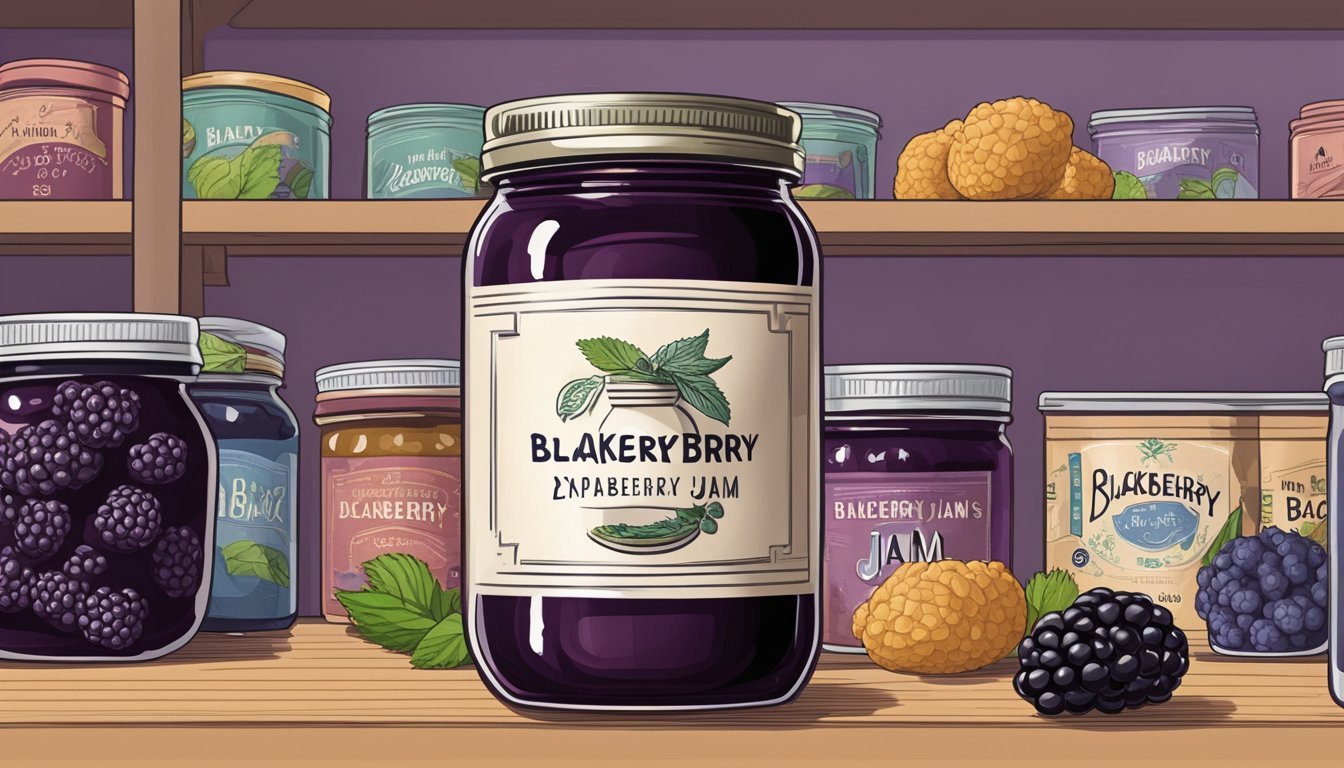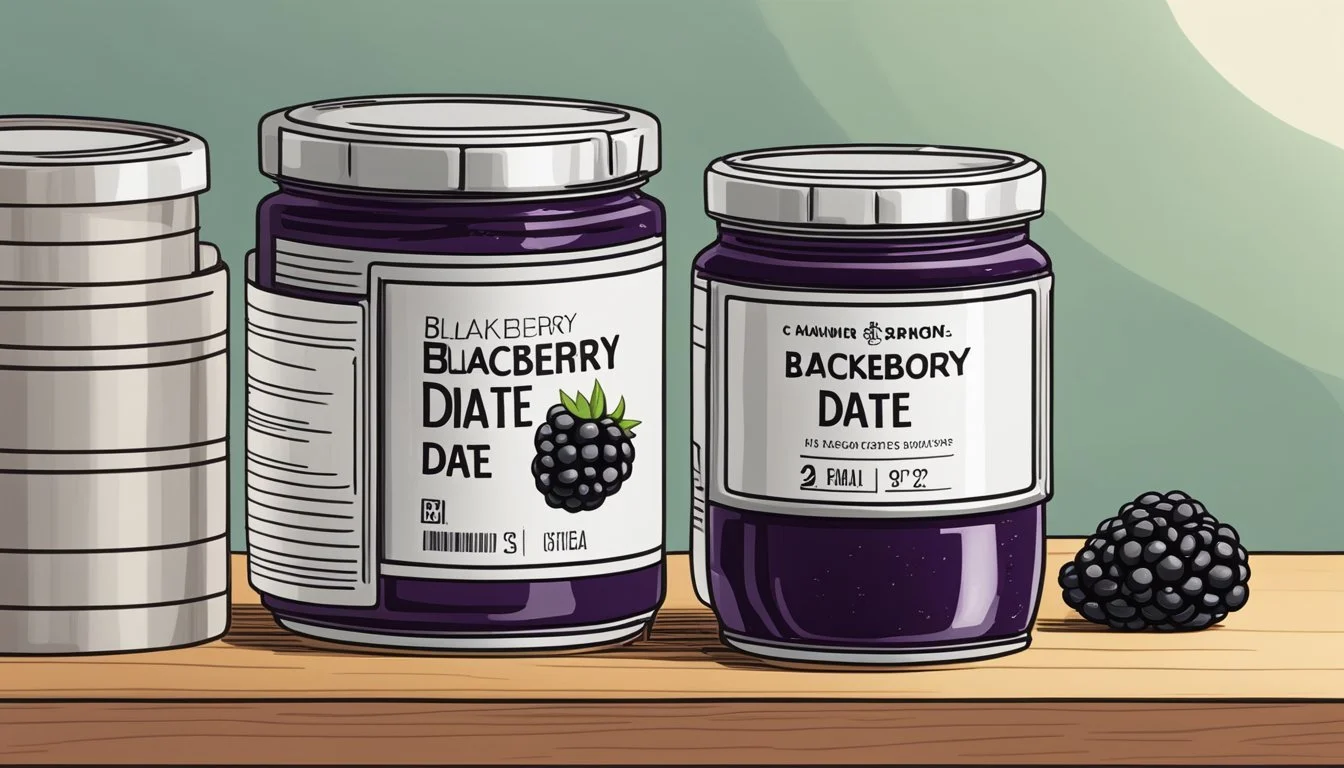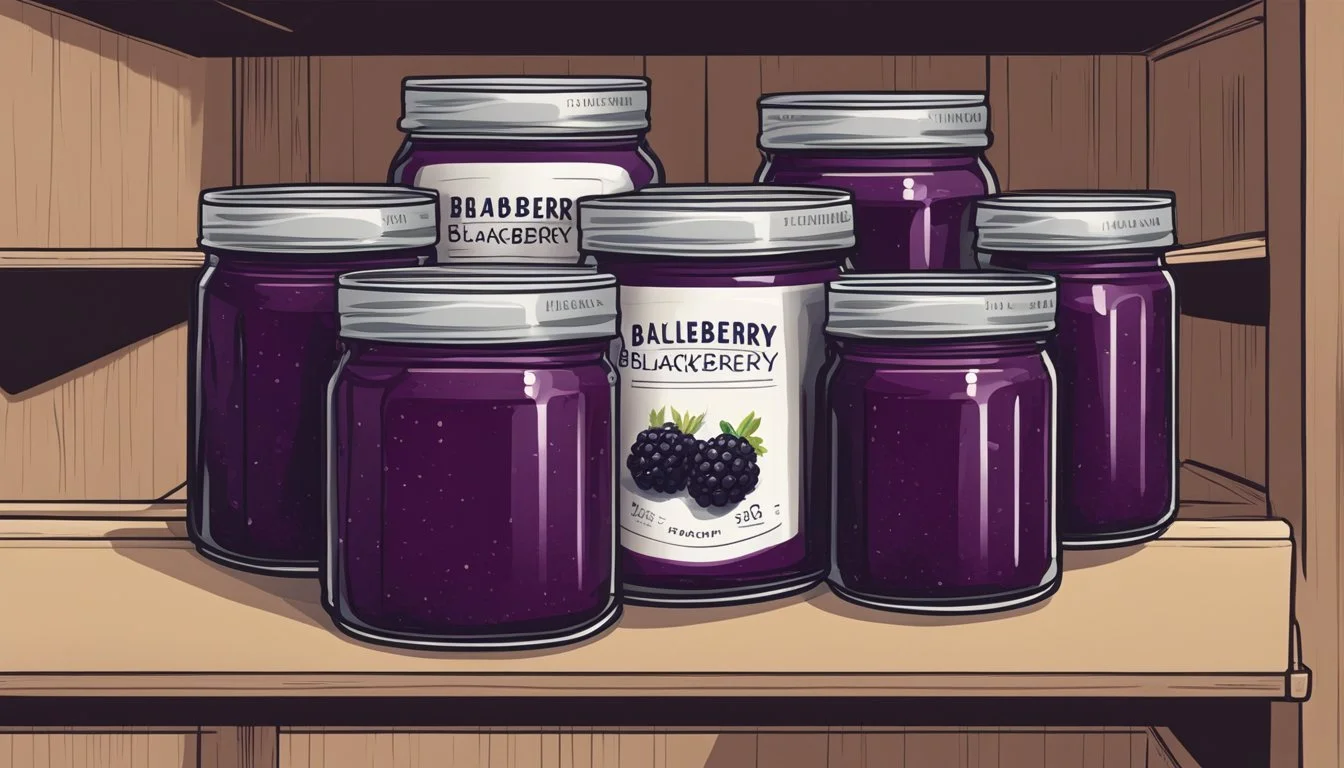Does Canned Blackberry Jam Expire?
Shelf Life and Storage Tips
Canned blackberry jam, like other canned products, has a long shelf life, but it does not last forever. When stored properly, unopened blackberry jam can last for 18 months to two years without significant loss in quality. Despite this, over time, the flavor, texture, and color may start to deteriorate.
Proper storage is key to maximizing the lifespan of canned jams. Ensuring that the seal remains intact and the jar is stored in a cool, dark place will help maintain its freshness. If you notice any changes in smell, texture, or appearance, it's best to err on the side of caution and discard the jar.
Even older jars, if sealed properly and showing no signs of spoilage, can still be safe to consume. However, the quality will be best within the first year. This makes it clear that while canned blackberry jam can technically expire, it remains safely edible for quite some time if conditions are met.
Understanding Food Preservation
Food preservation techniques have evolved to enhance food safety and prolong shelf life. Key methods include canning and the use of sugar, each playing a critical role in maintaining the quality and safety of products like blackberry jam.
History of Canning
Canning dates back to the early 19th century, pioneered by Nicolas Appert, who discovered that heat could preserve food in sealed glass jars.
This method involves placing food in jars, heating them to destroy microorganisms, and then sealing them to prevent contamination. Over time, the process has been refined to ensure better food safety standards and quality.
Modern canning emphasizes maintaining a proper vacuum seal and the right temperature to prevent the growth of harmful bacteria, such as Clostridium botulinum.
The Role of Sugar in Preservation
Sugar is not just a sweetener; it acts as a preservative in jams by absorbing water, which inhibits microbial growth.
High concentrations of sugar create an environment where bacteria and molds cannot thrive, enhancing the jam's shelf life. This fundamental principle is why full-sugar jams tend to last longer compared to low-sugar or sugar-free variants.
Moreover, sugar helps in maintaining the texture and color of jams, ensuring the preserved fruit retains its quality over time.
The Science Behind Jam-Making
The jam-making process involves cooking fruit with sugar and sometimes pectin. Pectin, a natural thickening agent found in fruit, is crucial for achieving the desired gel-like consistency. When combined with sugar and heat, pectin molecules form a network that traps the fruit's liquid content.
This scientific process ensures the jam sets properly and maintains its structure. Additionally, the heat used during cooking destroys pathogens, contributing further to food safety.
Understanding these aspects of food preservation helps in appreciating the meticulous process that goes into making and storing jams like blackberry jam, ensuring they remain safe and enjoyable for extended periods.
Components of Canned Blackberry Jam
Canned blackberry jam contains several key components that contribute to its unique flavor, texture, and preservation qualities. The primary ingredients include blackberries, sugar, lemon juice, and pectin, each playing a crucial role in the final product.
Ingredients Overview
The fundamental ingredients for canned blackberry jam are blackberries, sugar, lemon juice, and pectin.
Blackberries provide the base flavor and texture.
Sugar acts as a sweetener and preservative.
Lemon juice adds acidity to balance the sweetness.
Pectin is essential for the jam's gelling process.
A simple recipe might involve cooking these ingredients together until the desired consistency is achieved, emphasizing the importance of each component in achieving a perfect jam.
Understanding Pectin
Pectin is a natural substance found in many fruits that helps to thicken the jam.
It forms a gel-like consistency when combined with sugar and acid.
Adding pectin ensures that the jam sets properly without needing excessive sugar.
In blackberry jam, pectin can be naturally present in the fruit or added in powder or liquid form. This addition reduces the need for prolonged cooking, preserving the fresh taste of the blackberries.
The Importance of Acidity
Lemon juice is often added to blackberry jam recipes for its acidic properties.
Acidity helps in the setting process when combined with pectin and sugar.
It also enhances the flavor, providing a tart balance to the sweetness of the blackberries and sugar.
Ensuring the correct pH level is vital not only for taste but also for preservation, as the acidity helps prevent the growth of harmful bacteria and mold during storage.
Canning Process Techniques
Creating canned blackberry jam involves multiple steps that ensure both safety and quality. It’s crucial to prepare the jam mixture well, sterilize jars and lids, and use proper techniques to fill and seal the jars for effective preservation. The final step, a water bath canning method, completes the process.
Preparing the Jam Mixture
To start, the blackberries must be properly mashed. This ensures a consistent texture and evenly distributed flavor. Ingredients such as pectin, lemon juice, and sugar are essential.
The mixture is brought to a rolling boil while it’s constantly stirred to prevent burning and ensure even cooking. Adding butter can reduce foaming. Once boiling, the mixture must be monitored and timed accurately to set correctly.
Sterilization of Jars and Lids
Sterilizing jars and lids is a critical step. This prevents contamination and extends the shelf life of the blackberry jam. Jars can be heated in hot water, a dishwasher, or an oven set to 200°F.
The lids and rings are placed in a saucepan with water and brought to a simmer. Sterilization ensures a clean environment for the jam, crucial for a reliable seal.
Filling and Sealing Process
A canning funnel is useful for safely and cleanly transferring the hot jam mixture into the jars. Fill the jars leaving appropriate headspace, typically about 1/4 inch, to allow for proper sealing and expansion.
Once filled, place a sterile lid on top and hand-tighten the band to secure it. The headspace and secure sealing help in creating a vacuum when processed.
Water Bath Canning Method
The water bath canning method involves placing the sealed jars in a water bath canner filled with enough water to cover the jars by at least an inch. Bring the water to a boil and process the jars for a specific amount of time, usually 10 minutes for blackberry jam.
Turn off the heat, remove the canner lid, and let the jars cool in the water for five minutes. Carefully remove the jars and place them on a towel to cool for 12-24 hours. This step ensures the lids seal properly, preserving the jam.
By following these canning process techniques, one can create high-quality, shelf-stable blackberry jam.
Serving Suggestions
Blackberry jam adds delightful flavor to various dishes from hearty breakfasts to decadent desserts. This section explores different ways to enjoy this delicious jam.
Blackberry Jam in Breakfasts
Blackberry jam is a perfect companion for bread and toast. Spread a generous layer on warm, toasted bread for a sweet, tart bite that pairs well with butter.
For an elevated breakfast, bake blackberry jam into muffins. Swirl the jam into muffin batter before baking to create a beautiful and delicious pattern. This not only adds flavor but also makes the muffins visually appealing.
To add a special touch to your morning biscuits, slather on blackberry jam. The jam's richness complements the biscuit's flaky texture, creating a satisfying experience. A dollop of jam on Greek yogurt or oatmeal can add brightness and sweetness to your morning meal.
Using Blackberry Jam as a Dessert Topping
Blackberry jam excels as a topping for various desserts. Drizzle it over ice cream to add a fruity burst to creamy flavors. The jam's natural sweetness and slight tartness balance the ice cream's richness.
Pair blackberry jam with cheesecake. A thin layer of jam atop a classic cheesecake enhances its flavor profile and adds an appealing contrast in color and taste.
For a simple yet delightful dessert, serve blackberry jam with pound cake or angel food cake. Spread a layer of jam between cake slices or simply spoon it over the top to add moisture and flavor.
Creative Recipes with Blackberry Jam
Incorporate blackberry jam into unique recipes for added flair. Use it as a glaze for meat dishes like pork or chicken. The sweet and tangy notes of the jam contrast beautifully with savory meats.
Create a blackberry jam vinaigrette for salads. Mix the jam with vinegar, olive oil, and a hint of mustard for a flavored dressing that works well with spinach or arugula.
For a sweet snack, layer blackberry jam with cream cheese in a puff pastry to make delightful turnovers. Also, use it in cocktails by mixing a spoonful of jam into sparkling wine or lemonade for a fruity twist on classic beverages.
Preservation and Storage Tips
Proper preservation and storage are crucial to extend the shelf life of canned blackberry jam and maintain its freshness. These tips will guide you on storing your jam under optimal conditions and recognizing signs of spoilage.
Optimal Storage Conditions
Store canned blackberry jam in a cool, dry place like a pantry or cupboard.
Glass jars should be kept at a stable temperature away from direct sunlight, which can degrade the quality of the jam. Heat can also cause homemade jam to spoil, so ensure your storage area remains cool. Avoid stacking jars to prevent unnecessary pressure on the seals.
For long-term storage, consider placing the jars in a refrigerator. This can extend the jam’s shelf life beyond typical room temperature storage.
Understanding Shelf Life
Canned blackberry jam can last up to 1 year when stored properly, though some newer lids and methods may keep it fresh for up to two years.
Label the jars with the date of preparation, which helps in tracking freshness. If you make freezer jam, it can last even longer, typically up to 2 years in the freezer.
Always check the expiration date provided if using store-bought products.
Signs of Spoilage
Identifying spoilage is essential to ensure safety. Look for mold on the surface or inside the jar.
Discoloration or an off odor might also indicate that the jam has spoiled. Another key indicator is the condition of the jar’s lid; if the seal is compromised or if you hear a popping sound when opening a previously unopened jar, the jam may no longer be safe.
Check for any changes in texture or taste, which can also signal that the jam has expired.
Variations and Adaptations
When making blackberry jam, you can adjust the process to suit different needs such as altitude, alternative sweeteners, and preferences for pectin. These variations help customize the jam to better meet your culinary needs.
Adjusting for Altitude in Canning
Canning at higher altitudes requires adjustments to ensure the jam is safe and properly preserved. At altitudes above 1,000 feet, increase the processing time in the water bath by 5 minutes for every additional 1,000 feet. The boiling point of water decreases as altitude increases, which affects the temperature needed to safely preserve the jam.
Ensure you follow altitude-specific guidelines for time adjustments. This is especially crucial for preventing spoilage and ensuring the homemade jam maintains its quality and longevity.
Alternative Sweeteners and Flavors
Using alternative sweeteners like honey, agave syrup, or stevia can provide unique flavors and potentially lower the sugar content. Each sweetener has different properties, so the consistency and flavor of the jam might vary.
Vanilla and cinnamon can be added to blackberry jam to enhance its flavor. Use a half teaspoon of vanilla extract or a quarter teaspoon of ground cinnamon to start, adjusting to taste. These additions provide a warm, aromatic note to the jam.
Small Batch Canning for Beginners
Small batch canning is perfect for those new to the canning process or with limited space and resources. Use smaller quantities of fruit and jars, making the process more manageable and less time-consuming.
For a simple small batch recipe, use about 2 cups of mashed blackberries, 1 cup of sugar, and a tablespoon of lemon juice. This results in approximately two half-pint jars, ideal for beginners to practice and perfect their canning skills without the pressure of larger quantities.
Making Jam Without Pectin
Making jam without pectin is possible by using the natural pectin found in fruits along with a longer cooking time to achieve the desired thickness. Blackberries have sufficient natural pectin, particularly when combined with a source of acid like lemon juice.
To make pectin-free blackberry jam, cook the berries with sugar and lemon juice, stirring frequently, until it thickens and coats the back of a spoon. This process may take 20-30 minutes of cooking and constant stirring to ensure it reaches the right consistency without burning.
Using these methods, you can create delicious blackberry jam tailored to different preferences and conditions, maintaining quality and safety in your homemade preserves.
Health and Nutrition Information
Understanding the health and nutritional aspects of canned blackberry jam can help consumers make informed choices. This section explores the nutritional benefits of blackberries, calorie content in blackberry jam, and sugar content along with dietary implications.
Nutritional Benefits of Blackberries
Blackberries are packed with essential vitamins and nutrients. They are rich in Vitamin C, aiding in immune function and skin health. They also provide significant amounts of Vitamin K and Manganese, which are vital for blood clotting and bone health respectively.
Additionally, blackberries contain dietary fiber, which supports digestive health. Their antioxidants, such as anthocyanins, play a role in reducing oxidative stress and may help protect against chronic diseases.
Calorie Content in Blackberry Jam
A standard serving of blackberry jam (1 tablespoon) contains approximately 50 calories. These calories primarily come from sugars and carbohydrates.
Although the calorie count depends on the brand and recipe, homemade and store-bought jams often show similar ranges. Consumers should be mindful of portion sizes to manage calorie intake, especially if tracking consumption for weight management.
Sugar Content and Dietary Considerations
Blackberry jam typically contains a high sugar content, with one tablespoon providing around 10-12 grams of sugar. This sugar comes from both the natural fruit sugars and added sugars used in the jam-making process.
For individuals monitoring their sugar intake, such as those with diabetes, it’s crucial to moderate consumption. Some brands offer low-sugar or sugar-free options, which can be a healthier choice while still allowing enjoyment of blackberry jam.
Troubleshooting Common Problems
When dealing with canned blackberry jam, several issues may arise, including problems with consistency, mold and fermentation, and ensuring proper seals. Addressing these issues effectively can enhance the shelf life and safety of your canned jam.
Resolving Consistency Issues
Consistency problems in blackberry jam often occur due to incorrect sugar levels or inadequate pectin. To fix a too-runny jam, re-cook it. Add extra pectin, sugar, or an acid such as lemon juice.
To address a too-thick jam, ensure not to overcook it in the future. If already too thick, gently warm it with a bit of water to reach the desired consistency.
Using the right amount of sugar and thorough mixing prevent sugar crystals that lead to an undesirable texture. Stir constantly to dissolve sugar completely before boiling.
Preventing Mold and Fermentation
Mold and fermentation are common problems caused by improper storage or contamination. Always use sterilized jars and lids. Before sealing, ensure no air bubbles are trapped inside.
Store jam in the fridge after opening to minimize mold risk. Check the surface of the jam regularly and discard if mold appears. Hot filling also helps eliminate contaminants that can cause fermentation.
Use clean utensils when serving to avoid introducing bacteria, which can contribute to mold growth. Keeping storage areas dry and cool also prevents mold and fermentation.
Ensuring Proper Seals
A proper seal is crucial in preventing spoilage. Always sterilize jars and lids before use to minimize bacteria. Fill hot jam into jars, leaving proper headspace as indicated by canning guidelines.
Wipe jar rims after filling to ensure clean surfaces for sealing. Use a two-piece lid system, tightening only enough to hold. Post-sealing, jars should be processed in a boiling water bath for a specified duration.
After cooling, check seals by pressing the lid’s center. A properly sealed jar will not flex up and down. Any unsealed jars should be refrigerated and used first. Proper sealing extends the jam's shelf life and ensures safety.
Frequently Asked Questions
Does unopened canned blackberry jam expire?
Yes, unopened canned blackberry jam can expire. If stored properly in a cool, dark place, it can last between 18 months to two years. Always check the seal and the lid to ensure it is intact before consuming.
What should I look for in expired jam?
Inspect the jam for mold, discoloration, or off odors. If any of these signs are present, discard the jam immediately. Proper storage is crucial to maintain its safety and quality.
How long does opened blackberry jam last?
Once opened, blackberry jam should be refrigerated and consumed within six months. This timeframe can vary depending on the quality of the jam and the storage conditions.
Can I use expired jam in recipes?
Using expired jam in recipes is not recommended if it shows signs of spoilage. If the jam appears fine, has no mold or odd smells, it might still be usable, but it is best to use fresh ingredients for optimal safety and flavor.
Should I skim off the foam while making jam?
Yes, skimming off the foam that forms during the jam-making process ensures a clearer product and helps to prevent potential spoilage.
How does a water bath affect jam preservation?
A water bath canning process helps in sealing the jars properly, ensuring the longevity of the jam. This method kills any spoilage microorganisms and creates a vacuum seal, which is crucial for preservation.
Do seals on the jars matter?
Absolutely. A proper seal indicates that the jam has been processed correctly and is safe for storage. If the seal is compromised, the jam may spoil faster. Always check for a concave lid to ensure a good seal.

